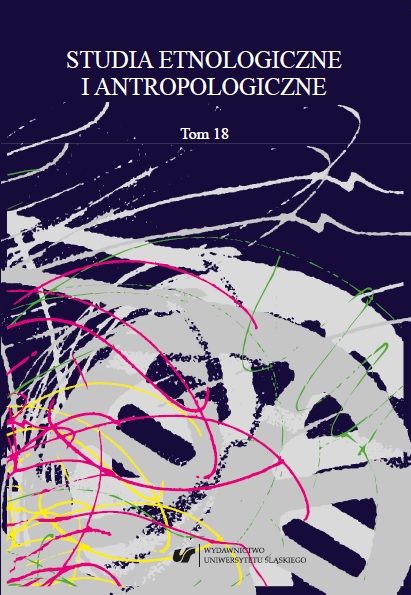Biedermann H.: Leksykon symboli. Przeł. J. Rubinowicz. Warszawa 2001.
Google Scholar
Bogucka M.,: Staropolskie obyczaje w XVI–XVII wieku. Warszawa 1994.
Google Scholar
Boże Krówki [sklep internetowy]. http://bozekrowki.pl/content/6-skad-sie-wziely-boze-krowki [data dostępu: 25.11.2017].
Google Scholar
Drożdż B.: Posługa charytatywna znakiem ewangelizacyjnej obecności Kościoła. „Perspectiva. Legnickie Studia Teologiczno-Historyczne” 2008, nr 1, s. 48–65.
Google Scholar
Gemilut chasadim. Więcej niż „cedaka”. Forum Żydów Polskich. http://www.fzp.net.pl/judaizm/gemilut-chasadim [data dostępu: 15.07.2017].
Google Scholar
Gloger Z.: Encyklopedia staropolska ilustrowana. Warszawa 1972.
Google Scholar
Janiak S.: Destynacje europejskie. Atrakcje turystyczne Europy. http://www.voyager64.com/marktl.html [data dostępu: 26.08.2017].
Google Scholar
Kasperski E.: Święte i świeckie. Przemiany wartości. W: Człowiek – dzieło – sacrum. Red. S. Gajda, H.J. Sobeczko. Opole 1998, s. 49–61.
Google Scholar
„Komuś krówkę z przepowiednią?” [wątek dyskusji na forum internetowym]. http://wielodzietni.org/index.php?p=/discussion/16612/komu%C5%9B-krowke-z-przepowiednia [data dostępu: 25.11.2017].
Google Scholar
Kopaliński W.: Słownik symboli. Warszawa 1990.
Google Scholar
Leksykon symboli. Oprac. M. Oesterreicher-Mollwo. Przeł. J. Prokopiuk. Warszawa 1992.
Google Scholar
Lenart M.: Zapomniany świat dawnego mistycyzmu, czyli o znaczeniu jedzenia i ciała u kobiet w komunikacji z Bogiem. W: Pokarmy i jedzenie w kulturze. Tabu, dieta, symbol. Red.
Google Scholar
K. Łeńska-Bąk. W: „Stromata Anthropologica”. Opole 2007, s. 159–169 .
Google Scholar
Łeńska-Bąk K.: Sól ziemi. Wrocław 2002
Google Scholar
Biedermann H.: Leksykon symboli. Przeł. J. Rubinowicz. Warszawa 2001.
Google Scholar
Bogucka M.,: Staropolskie obyczaje w XVI–XVII wieku. Warszawa 1994.
Google Scholar
Boże Krówki [sklep internetowy]. http://bozekrowki.pl/content/6-skad-sie-wziely-boze-krowki [data dostępu: 25.11.2017].
Google Scholar
Drożdż B.: Posługa charytatywna znakiem ewangelizacyjnej obecności Kościoła. „Perspectiva.
Google Scholar
Legnickie Studia Teologiczno-Historyczne” 2008, nr 1, s. 48–65.
Google Scholar
Gemilut chasadim. Więcej niż „cedaka”. Forum Żydów Polskich. http://www.fzp.net.pl/judaizm/gemilut-chasadim [data dostępu: 15.07.2017].
Google Scholar
Gloger Z.: Encyklopedia staropolska ilustrowana. Warszawa 1972.
Google Scholar
Janiak S.: Destynacje europejskie. Atrakcje turystyczne Europy. http://www.voyager64.com/marktl.html [data dostępu: 26.08.2017].
Google Scholar
Kasperski E.: Święte i świeckie. Przemiany wartości. W: Człowiek – dzieło – sacrum. Red. S. Gajda, H.J. Sobeczko. Opole 1998, s. 49–61.
Google Scholar
„Komuś krówkę z przepowiednią?” [wątek dyskusji na forum internetowym]. http://wielodzietni.org/
Google Scholar
index.php?p=/discussion/16612/komu%C5%9B-krowke-z-przepowiednia [data dostępu: 25.11.2017].
Google Scholar
Kopaliński W.: Słownik symboli. Warszawa 1990.
Google Scholar
Leksykon symboli. Oprac. M. Oesterreicher-Mollwo. Przeł. J. Prokopiuk. Warszawa 1992.
Google Scholar
Lenart M.: Zapomniany świat dawnego mistycyzmu, czyli o znaczeniu jedzenia i ciała u kobiet w komunikacji z Bogiem. W: Pokarmy i jedzenie w kulturze. Tabu, dieta, symbol. Red. K. Łeńska-Bąk. W: „Stromata Anthropologica”. Opole 2007, s. 159–169 .
Google Scholar
Łeńska-Bąk K.: Sól ziemi. Wrocław 2002
Google Scholar


 https://doi.org/10.31261/SEIA.2018.18.13
https://doi.org/10.31261/SEIA.2018.18.13

 10.31261/SEIA
10.31261/SEIA